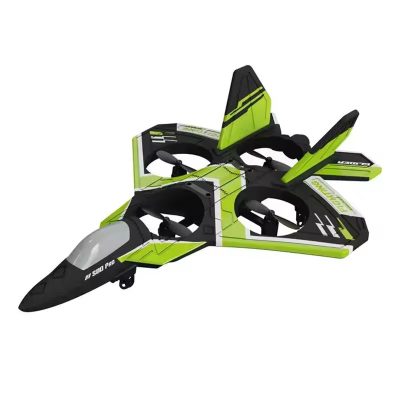Introduction
Entering the world of RC helicopters can be exciting, yet choosing the right model for beginners can be overwhelming. With various types, sizes, and features available, selecting the best RC helicopter requires some understanding. This blog post will guide you through the key considerations for choosing the right RC helicopter for beginners.
1. Types of RC Helicopters
RC helicopters come in different types, each offering unique features and complexities:
- Coaxial Helicopters: These have two rotors spinning in opposite directions, providing excellent stability and easy control. They are ideal for beginners due to their simplicity.
- Single Rotor Fixed Pitch: These helicopters have one rotor and a fixed pitch blade. They offer more speed and maneuverability than coaxial helicopters but require more skill to control.
- Single Rotor Collective Pitch: These are the most advanced and agile RC helicopters, with blades that change pitch. They are best suited for experienced pilots due to their complexity and potential for high-speed maneuvers.
2. Size and Durability
The size and durability of an RC helicopter are crucial factors for beginners:
- Micro and Mini Helicopters: Smaller models are perfect for indoor use and are generally more durable. They are less likely to suffer severe damage in crashes, making them ideal for learning.
- Medium and Large Helicopters: These are suitable for outdoor flying and offer better stability in windy conditions. However, they are more complex and can be more challenging for beginners.
3. Flight Time and Battery Life
Battery life is an essential consideration for an enjoyable flying experience:
- Battery Type: Most RC helicopters use Lithium Polymer (LiPo) batteries, known for their high energy density and lightweight. Ensure the helicopter comes with a reliable charger.
- Flight Time: Beginners should look for models that offer at least 5-10 minutes of flight time per charge. Extra batteries can be purchased to extend flying sessions.
4. Stability and Control Features
For beginners, stability and ease of control are critical:
- Gyro Stabilization: This feature helps maintain stability by automatically adjusting the helicopter’s balance. It is especially useful for new pilots learning to hover and maneuver.
- Remote Control: A user-friendly remote with clear instructions and responsive controls is essential. Look for models with adjustable sensitivity settings to match your skill level.
5. Price and Spare Parts Availability
Consider the cost and availability of spare parts:
- Affordability: Beginners should start with affordable models to minimize the financial impact of crashes and repairs.
- Spare Parts: Ensure that spare parts such as blades, motors, and landing gear are readily available. This makes it easier to repair and maintain the helicopter.
Conclusion
Choosing the right RC helicopter for beginners involves understanding the types, sizes, stability features, and costs. Coaxial helicopters and small, durable models are excellent starting points. Prioritize models with gyro stabilization and user-friendly controls to make learning easier. By considering these factors, you can find an RC helicopter that provides a fun and rewarding flying experience as you begin your journey in the hobby.








